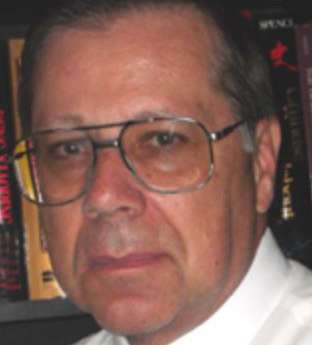
By JOHN RICHARD SCHROCK
The first case of polio in the United States in a decade has been reported from Rockland County, New York. The unvaccinated victim suffers paralysis and was never out-of-country. Analysis of his strain of polio virus indicates he contracted it from someone who had received the oral vaccine overseas.
Four months ago I wrote the commentary asking “Will Polio Return?,” summarizing a March 3 report in the journal Science titled “Africa battles out-of-control polio outbreaks” which I summarize again. Science reporter Leslie Roberts detailed how cases had fallen in the last countries with the polio virus, Pakistan and Afghanistan. We had hoped to end polio just like we wiped out smallpox.
But this threat continued, as the CDC website states: “It takes only one traveler with polio to bring the disease into the United States. The best way to keep the United States polio-free is to maintain high immunity (protection) in the U.S. population against polio through vaccination.”
Four months ago, African outbreaks were out of control and a “grave threat to eradication.” Then the polio virus was detected in sewage in England. And now a case has arisen in New York.
This vaccination story is complicated. The polio vaccines were developed in the United States, first the 1955 injected vaccine by Jonas Salk (1914–1995) and in 1961 the sugar cube vaccine by Albert Sabin (1906–1993). Salk’s vaccine was an inactivated or “dead” virus that had no ability to infect cells, but did elicit solid immunity. It was the first to turn the tide on polio from 1955 to 1960.
Sabin’s vaccine was a modified active polio virus that did not cause paralysis but did stimulate the immune system to produce immunity. Vaccine drops were placed on sugar cubes and taken orally. They became common after 1960. This active virus vaccine had an advantage of reproducing in the intestinal tract and being shed to in turn “vaccinate” others. This would allow a vaccination campaign to be more effective since vaccinating one person could end up also protecting their family and neighbors.
But there was a problem with the Sabin oral vaccine: variations can arise similar to what we are seeing in the covid-19 virus. On April 5, 1988, public television ran a program that interviewed both Salk and Sabin—separately, because they were enemies. “NOVA: Can You Still Get Polio?” is still accessible online and describes the problem very well. While nearly all of the people who received the oral vaccine gained solid immunity, a few very rare individuals contracted polio from the oral vaccine.
In 2000, the U.S. would return to only using Salk’s completely safe inactivated poliovirus vaccine (IPV). However, due to its ability to spread and produce immunity in the unvaccinated, Sabin’s oral poliovirus vaccine (OPV) has continued to be used overseas and has been relatively effective eradicating polio worldwide. —With the exceptions of Pakistan, Afghanistan and now Nigeria. The longstanding problem completing vaccination in Pakistan and Afghanistan, and thus eliminating polio worldwide, has been science-ignorance and the belief that it is an attempt to sterilize people. But in Nigeria, it is vaccine-derived polio that restarted the epidemic, and there is hope a new more stable oral vaccine will work.
But more new cases of wild polio have showed up in Malawi. The journal Science reported that “On 17 February, Malawi’s Ministry of Health announced a...3-year-old girl who was paralyzed in November 2021 was infected with the wild poliovirus, which Africa officially vanquished in 2020. The sequence of the virus showed it had somehow made the leap from Pakistan, one of the last two holdouts of the wild virus. A week later came bad news from Afghanistan: Gunmen killed eight polio workers in the country’s northeast.”
Similar to smallpox, polioviruses only infect humans. So the potential to eliminate this disease remains. But because just one traveler could bring polio back into the United States, the CDC recommends children get four doses of polio vaccine (at 2 months old, 4 months old, 6 through 18 months old, and 4 through 6 years old).
Afghanistan has gunmen. The United States has anti-vaxxers. This disease may never be eradicated.
My prediction last March has now come true. A U.S. population in the 1950s who saw children on crutches and adults in iron lungs had no difficulty driving polio off this continent by vaccination. Today’s younger population with no experience with polio also carry “smartphones” that spread non-science nonsense.
Science was successful. Society is not.
. . .
John Richard Schrock has trained biology teachers for more than 30 years in Kansas. He also has lectured at 27 universities during 20 trips to China. He holds the distinction of “Faculty Emeritus” at Emporia State University.





